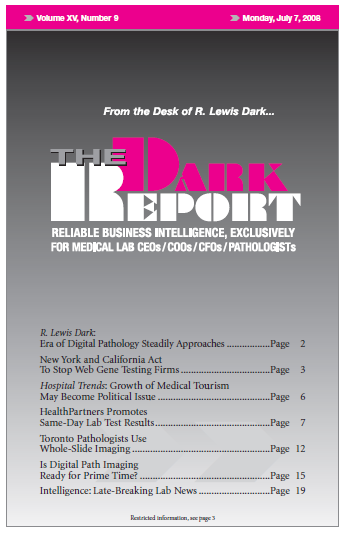CEO SUMMARY: Across the nation, labs report a near doubling in the volume of vitamin D tests they are performing. This is a success for laboratory medicine and an appropriate use of diagnostics tests as physicians strive for early detection and early intervention of vitamin D deficiency. However, the next chapter in this story will …
Vitamin D Test Volumes Doubled in Past Year Read More »
To access this post, you must purchase The Dark Report.


